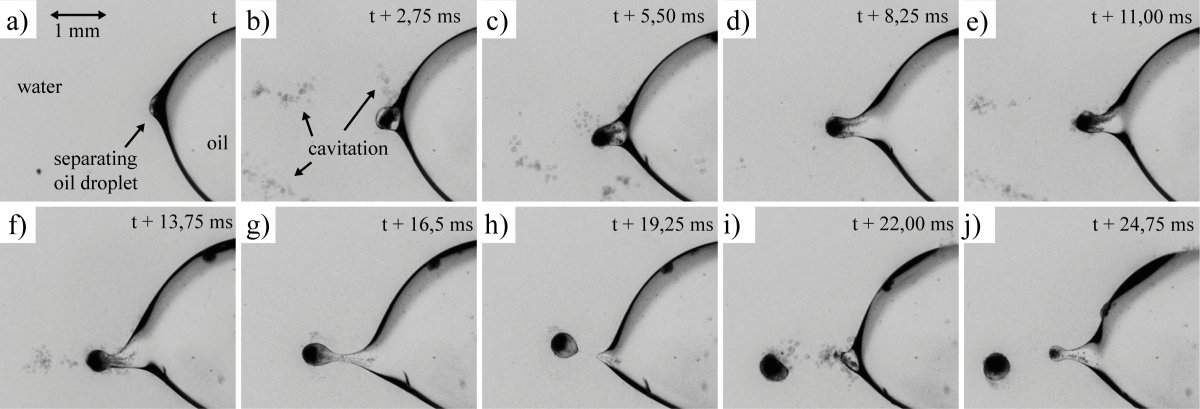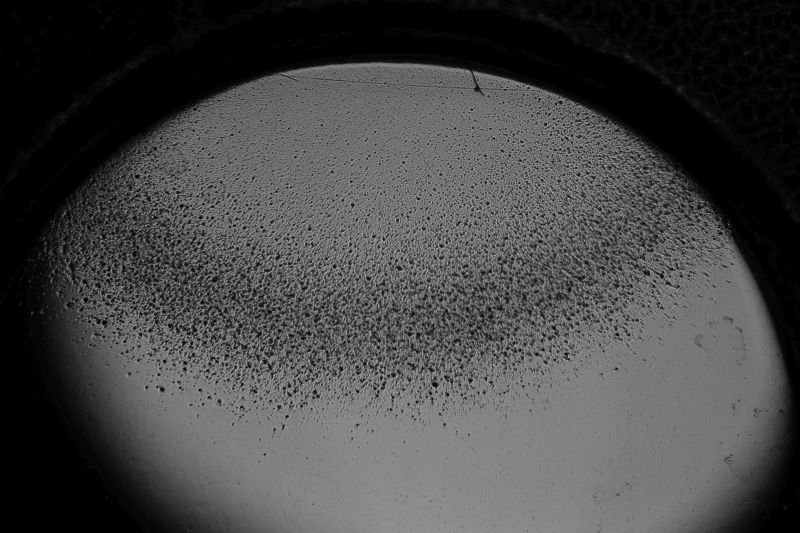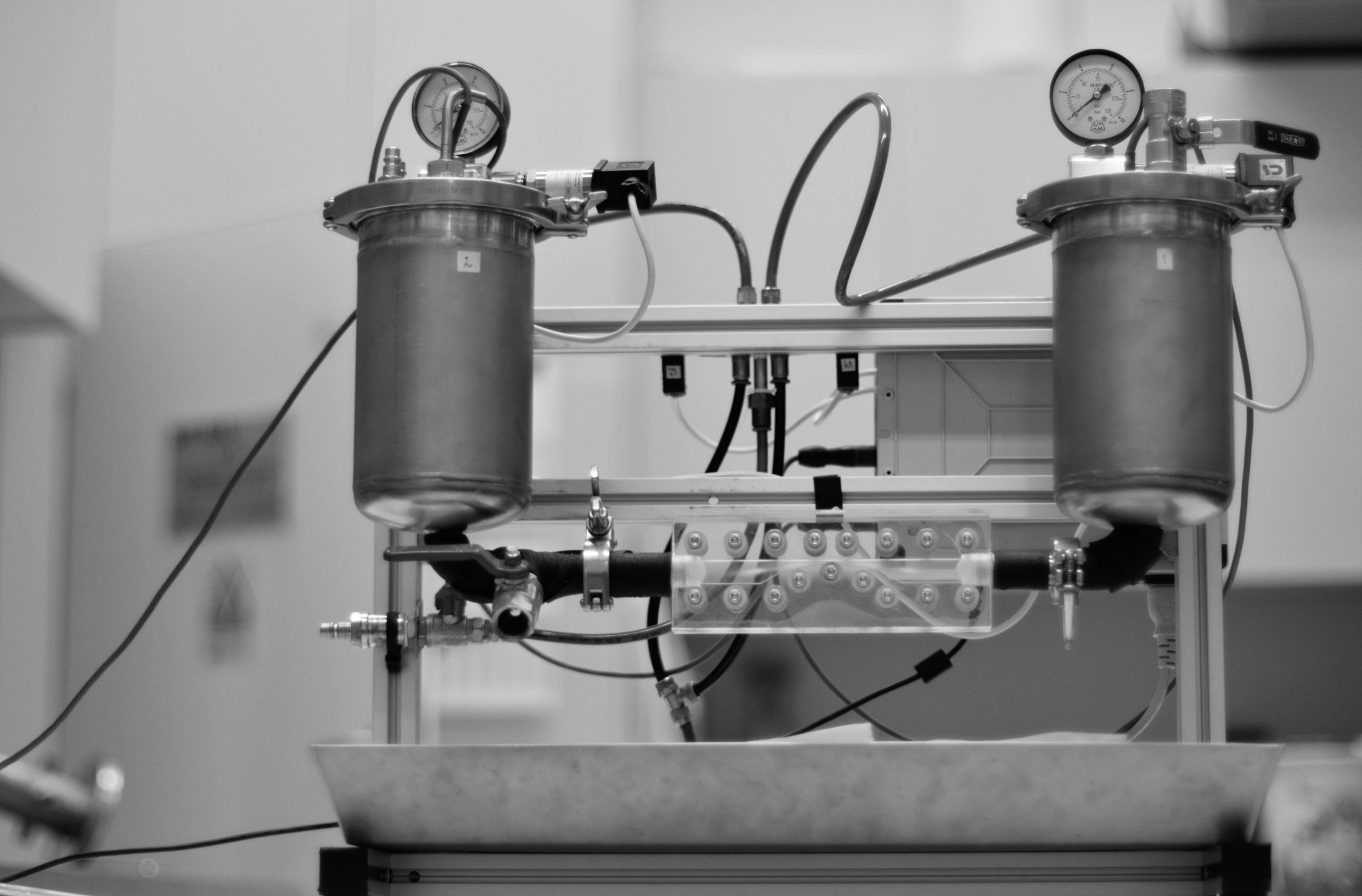Cavitation
Merry Christmas and Happy New Year!
May 2024 be as dynamic (but less turbulent) as our fluid Christmas tree!
LVTS Team

Basic research
Cavitation as a physical phenomenon describes the growth and collapse of small cavities, perceived as vapour-gas bubbles, within a liquid due to a local pressure drop. Basic research is essential to understand the phenomenon in detail (https://doi.org/10.1016/j.ijmultiphaseflow.2021.103700). Although cavitation initially attracted the interest of the scientific community due to its negative effects, such as material erosion and vibrations in hydraulic machines, it is now used for a variety of applications. Among others, we find cavitation in surface cleaning processes, in various medical procedures, and in wastewater treatment (https://doi.org/10.1016/j.ultsonch.2015.10.010). Using state-of-the-art experimental equipment and advanced numerical modelling, we study the dynamics of cavitation down to the smallest detail, from single bubbles to random bubble clusters (https://doi.org/10.1016/j.ultsonch.2020.105126).

Cavitation erosion
Cavitation, and consequently cavitation erosion, is one of the most ubiquitous problems in the operation of turbines, pumps, ship propellers, and valves. Currently, the most widely accepted explanation for the occurrence of cavitation erosion is that the potential energy contained in a macro cavity is converted into the radiation of acoustic pressure waves, and further into the erosive potential contained in the microscale cavitation structures or individual bubbles that collapse in the vicinity of the material boundaries (https://doi.org/10.1016/j.expthermflusci.2015.06.001). This leads to the formation of significant shock waves, which in turn can reach amplitudes capable of deforming the material and have an erosive effect over time (https://doi.org/10.1016/j.wear.2015.11.007).

Cavitation devices
Nowadays, the use of cavitation phenomena is widespread, so the design and development of cavitation generators is an important part of the treatment chain. Designing a cavitation generator with specific cavitation characteristics is challenging and requires full support of understanding basic cavitation phenomena and mechanisms for treatment in the specific application (https://doi.org/10.1016/j.ultsonch.2015.01.006). All of our cavitation devices, from laboratory (https://doi.org/10.1016/j.cej.2020.125389) to pilot scale (https://doi.org/10.1016/j.ultsonch.2020.105431), are custom designed and can meet specific requirements for specific applications.
